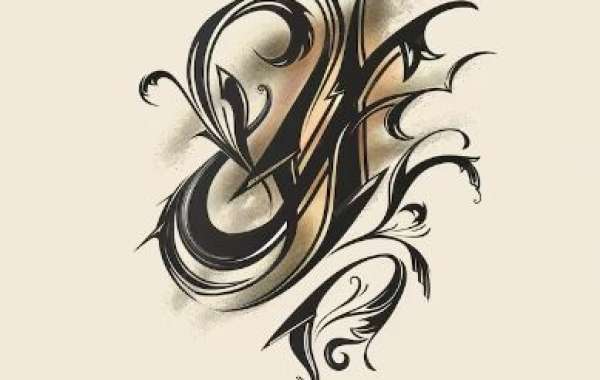Calligraphy, or calligraphie in French, is more than just beautiful handwriting. It is an ancient art form that blends precision, creativity, and rhythm to produce visually stunning text. Originating from early civilizations, calligraphy has evolved through centuries, maintaining its timeless allure while adapting to modern design trends. Whether for personal expression, professional use, or simply as a relaxing hobby, calligraphy continues to captivate people worldwide.
In this blog, we will explore the enchanting world of calligraphy, its significance in history and modern-day applications, and how you can embark on your own calligraphic journey.
A Brief History of Calligraphy
The roots of calligraphy trace back to ancient civilizations. From early Chinese calligraphy, where characters were drawn with delicate brushes, to Arabic script flourishing in intricate geometric designs, each culture developed its unique style of writing. Calligraphy was not just about conveying a message but doing so in a way that reflected beauty and harmony.
In Europe, medieval scribes played a significant role in the evolution of calligraphy. Monks and scholars meticulously penned religious manuscripts, preserving knowledge and artistry in books that were often considered treasures. The Gothic and Roman styles of calligraphy flourished during this time, with elaborate strokes and letters that adorned religious texts, legal documents, and works of literature.
As printing technologies emerged in the 15th century, handwritten texts became less practical for mass communication. However, calligraphy did not disappear. Instead, it found new life in the form of decorative arts, wedding invitations, and personal correspondence, where the personal touch of hand-drawn letters was highly valued.
The Different Styles of Calligraphy
Calligraphy is diverse, with various styles suited for different purposes and tastes. Here are some of the most popular forms:
Western Calligraphy: Rooted in ancient Roman writing, Western calligraphy includes several popular scripts, such as Italic, Gothic, and Copperplate. These scripts have distinctive features, from the clean elegance of Italic to the ornate flourishes of Copperplate. Western calligraphy is often associated with wedding invitations, certificates, and formal documents.
Arabic Calligraphy: Characterized by flowing, cursive-like scripts, Arabic calligraphy is deeply intertwined with the Islamic tradition. It is often used to transcribe religious texts like the Quran, and its visual beauty is recognized worldwide. This style of calligraphy emphasizes grace and fluidity, with letters connecting harmoniously.
Chinese and Japanese Calligraphy: Known as shufa in Chinese and shodo in Japanese, this form of calligraphy places a strong emphasis on brushwork. Artists use varying degrees of pressure and speed to create strokes, each symbolizing energy and movement. This type of calligraphy often appears in fine art, with characters that communicate emotions as much as meaning.
Modern Calligraphy: A blend of traditional techniques and contemporary flair, modern calligraphy is widely popular today. With more freedom in structure, artists often mix and match elements from classic scripts to create their own unique styles. This approach is widely used in branding, logos, and social media art.
Why Calligraphy Is Still Relevant Today
Despite living in a world dominated by digital fonts and graphic design software, the art of calligraphy holds a unique place in modern culture. Here’s why:
Personalization: In an era where mass production is common, handcrafted elements like calligraphy stand out. From wedding invitations to personal letters, calligraphy adds a special touch that can’t be replicated by a machine.
Mindfulness: Calligraphy requires focus and patience, making it a relaxing activity that promotes mindfulness. The rhythm of drawing each letter offers a meditative quality, helping practitioners slow down and connect with their creative side.
Aesthetic Appeal: Calligraphy is often used to enhance the beauty of documents, artwork, and interior design. Its artistic strokes and elegant forms appeal to a wide range of tastes, making it a versatile tool for both traditional and contemporary designs.
Cultural Heritage: Calligraphy preserves cultural history, with styles passed down through generations. Whether it’s an ancient script or a modern adaptation, the practice of calligraphy connects us to the past while allowing for personal expression in the present.
Getting Started with Calligraphy
If you’re interested in exploring calligraphy, here are some steps to help you begin:
Choose Your Style: Decide whether you’d like to start with a traditional script, such as Italic or Gothic, or experiment with modern calligraphy. Each style requires different tools, so knowing what you want to achieve is essential.
Gather Materials: Depending on the style, you’ll need specific tools like calligraphy pens, ink, and paper. For brush calligraphy, high-quality brushes and ink are required, while dip pens or fountain pens are commonly used for Western scripts.
Practice Patience: Calligraphy is a skill that takes time to develop. Start by practicing basic strokes and letter forms. It’s important to be patient and allow yourself the time to perfect your craft.
Join a Community: There are countless online resources and communities for aspiring calligraphers. Social media platforms like Instagram and Pinterest offer inspiration, while forums and workshops provide opportunities to learn from experienced artists.
Conclusion
Calligraphy, or calligraphie, is an art form that has endured for centuries and continues to thrive in today’s world. Whether you’re looking to improve your penmanship, find a relaxing hobby, or create stunning designs, calligraphy offers endless possibilities for creativity and expression. By learning the basics and dedicating time to practice, you can develop this timeless skill and bring elegance to every letter you create.




